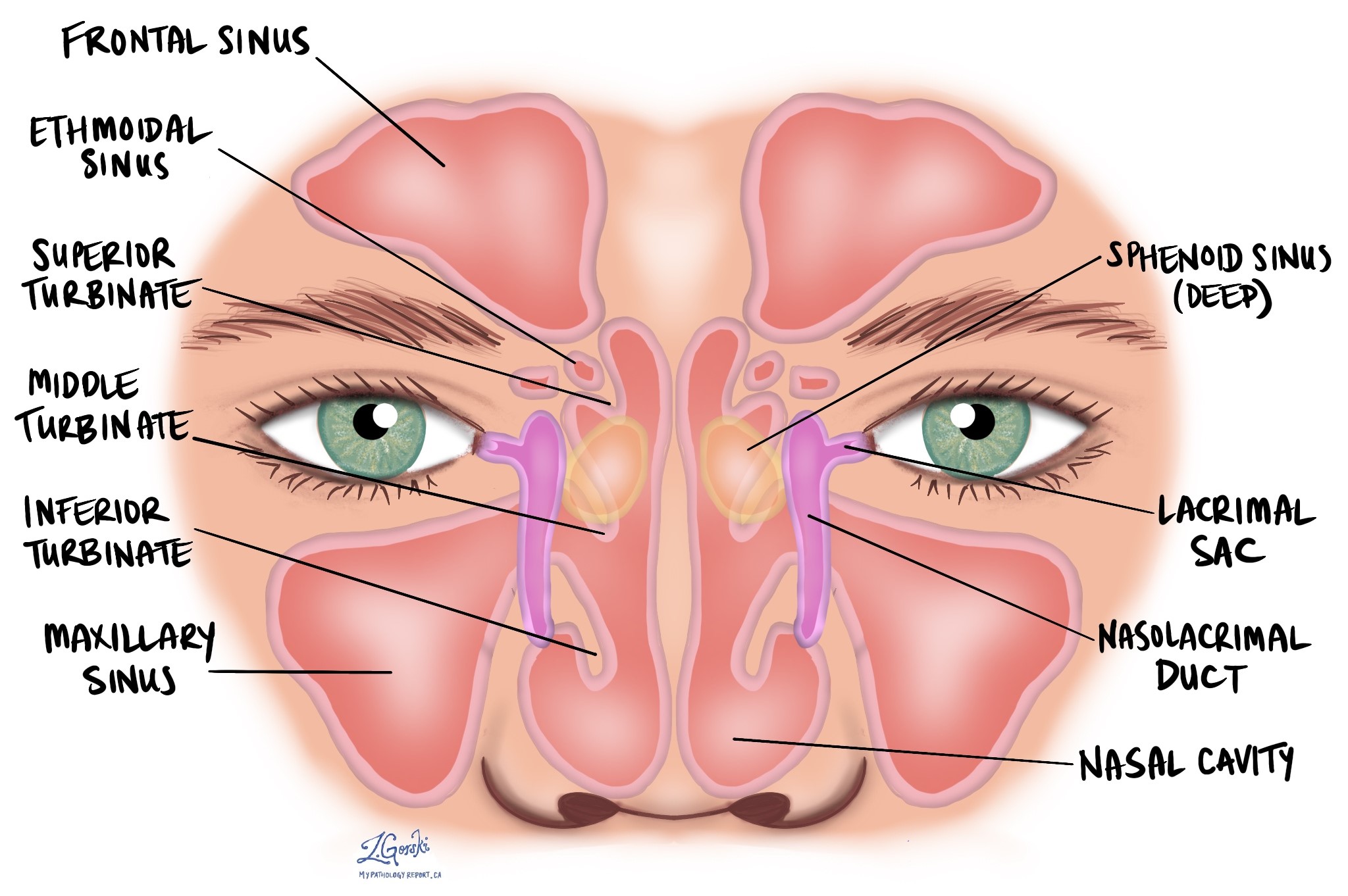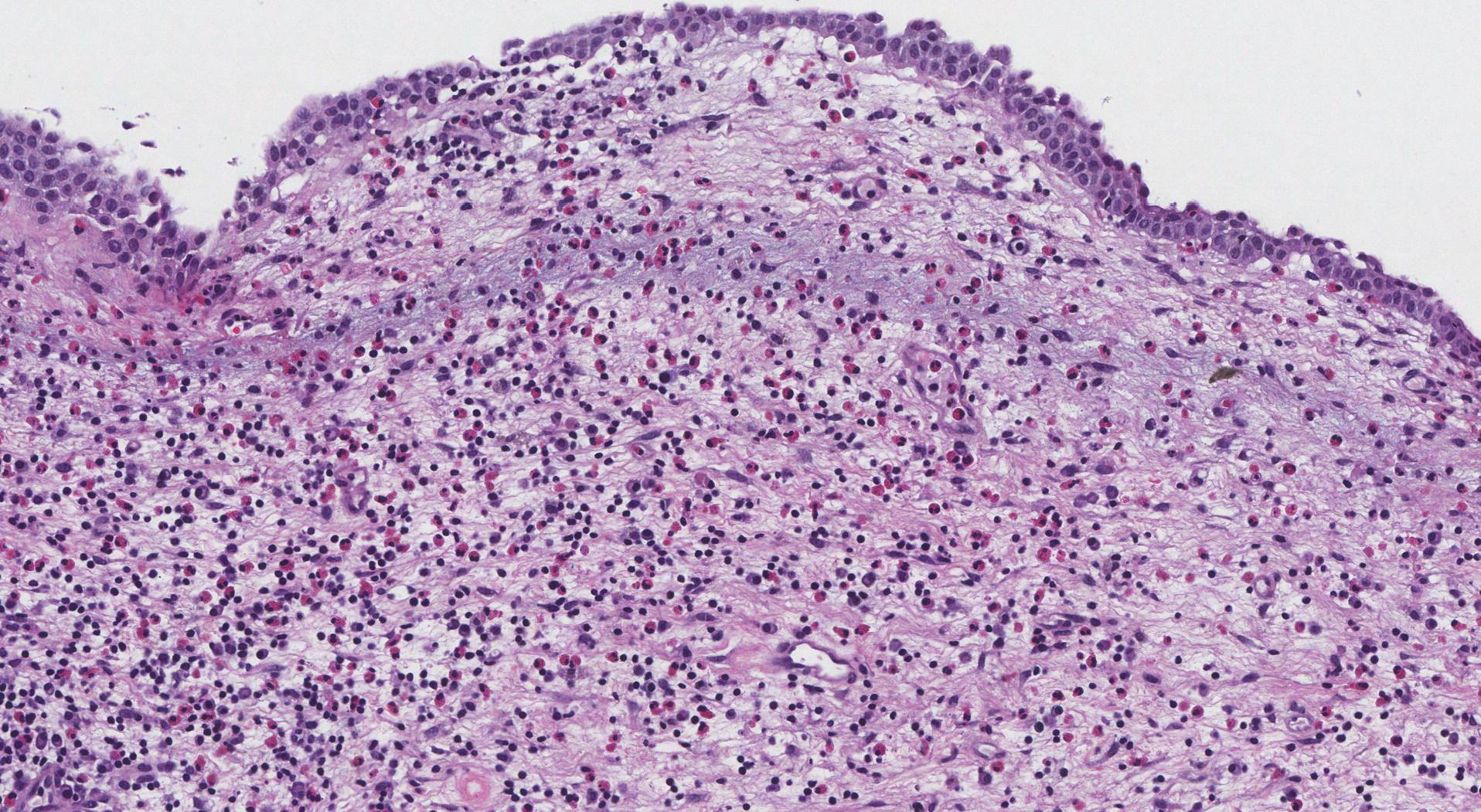by Jason Wasserman MD PhD FRCPC
March 7, 2023
What is chronic rhinosinusitis?
Chronic rhinosinusitis is a medical condition caused by inflammation of the nasal cavity and paranasal sinuses. It is a very common condition that typically affects adults. People with chronic rhinosinusitis are more likely to develop non-cancerous growth in the nasal cavity or paranasal sinuses called a sinonasal inflammatory polyp.

What causes chronic rhinosinusitis?
Chronic rhinosinusitis can be caused by anything that leads to chronic inflammation of the nasal cavity and paranasal sinuses including allergies, upper respiratory tract infections, smoking, cystic fibrosis, exposure to irritants, aspirin intolerance, and autoimmune diseases.
What is the difference between sinusitis and rhinosinusitis?
The term rhinosinusitis is used to describe inflammation involving both the nasal cavity and the sinuses. Sinusitis on the other hand is used to describe inflammation that only affects the sinuses. Because inflammation rarely affects the sinuses without the nasal cavity, doctors prefer the term rhinosinusitis.
How do pathologists make the diagnosis of chronic rhinosinusitis?
The diagnosis of chronic rhinosinusitis is usually made after a small tissue sample is removed in a procedure called a biopsy. The tissue is then examined under the microscope by a pathologist.
What does chronic rhinosinusitis look like under the microscope?
When examined under the microscope, large numbers of specialized inflammatory cells including neutrophils, eosinophils, plasma cells, and lymphocytes are seen within the tissue. The inflammatory cells are typically seen both the in the epithelium (the thin layer of tissue that covers the inside of the nasal cavity and sinuses) and the stroma (the layer of tissue below the epithelium). Pathologists sometimes use the term chronic allergic rhinosinusitis when most of the inflammatory cells within the stroma are eosinophils. The stroma also tends to look white under the microscope because it is full of fluid. This type of change is called edema. Inflammatory cells such as neutrophils and eosinophils may also be seen in the epithelium on the surface of the tissue. When these same features are seen in a growth that sticks out from the surface of the tissue, it is called a sinonasal inflammatory polyp.




